Influence of Thermal Effects on Qinghai-Tibet Plateau on Air Quality in Typical Regions of China in Winter
Abstract
1. Introduction
2. Information and Methods
2.1. Information Introduction
2.2. Atmospheric Apparent Heat Source Q1
2.3. Selection of Strong and Weak Years of Apparent Heat Source Q1 on the Qinghai-Tibet Plateau in Winter
3. Results
3.1. Relationship between the Apparent Heat Source Q1 on the Qinghai-Tibet Plateau and Air Pollution in China
3.1.1. Spatial Distribution Characteristics of Correlation between the Apparent Heat Source Q1 on the Qinghai-Tibet Plateau and PM2.5 Concentration in China
3.1.2. Correlation between the Apparent Heat Source Q1 on the Qinghai-Tibet Plateau and PM2.5 Concentration in Five Typical Regions
3.1.3. Correlation between the Apparent Heat Source Q1 on the Qinghai-Tibet Plateau and Concentration of PM2.5 in Typical Cities
3.2. Analysis of Circulation and Temperature Fields in Strong and Weak Years of the Apparent Heat Source Q1 on the Qinghai-Tibet Plateau
3.2.1. General Circulation Situation
3.2.2. Profile of the Wind Field and Temperature Field in Five Typical Pollution Areas
3.3. Spatial Distribution of Correlation between the Apparent Heat Source Q1 on Qinghai-Tibet Plateau and Haze Days in China and The Difference between the Two Sides of the Boundary Line
4. Summaries and Discussions
Author Contributions
Funding
Conflicts of Interest
References
- Qiao, Y.; Zhou, S.; Ma, Y.; Wang, C.; Li, Q. Dynamic Effect of Tibetan Plateau and Its Impact on Weather and Climate in China. Meteorol. Sci. Technol. 2014, 42, 1039–1046. [Google Scholar]
- Ye, D.; Luo, S.; Zhu, B. The flow field structure and the heat balance in the troposphere in the Tibetan Plateau and its vicinity. J. Trop. Meteorol. 1957, 2, 108–121. (In Chinese) [Google Scholar]
- Flohn, H. Large-scale aspects of the “summer monsoon” in South and East Asia. J. Meteorol. Soc. Jpn. 1957, 75, 180–186. [Google Scholar] [CrossRef]
- Yang, W.; Ye, D.; Wu, G. Diagnostic Analysis of Thermal Field and Circulation Field in Tibetan Plateau in Summer. Chin. J. Atmos. Sci. 1992, 3, 287–301. (In Chinese) [Google Scholar]
- Chen, L.; Duan, T.; Li, W. Atmospheric heat source changes over the Tibetan Plateau in summer and the characteristics of atmospheric energy budget in 1979. Acta Meteorol. Sin. 1985, 1, 1–12. [Google Scholar]
- Zhao, P.; Chen, L. Climatic Characteristics of Atmospheric Heat Source over the Tibetan Plateau in the Past 35 Years and Its Relationship with Precipitation in China. Chin. Sci. (D Earth Sci.) 2001, 4, 327–332. [Google Scholar]
- Wang, T.; Wu, G.; Wan, R. Influence of the Mechanical and Thermal Forcing of Tibetan Plateau on the Circulation of the Asian Summer Monsoon Area. Plateau Meteorol. 2008, 1, 1–9. (In Chinese) [Google Scholar]
- Zhong, S.; He, J.; Guan, Z.; Wen, M. Climatic characteristics of the atmospheric heat source over the Tibetan Plateau during 1961–2001. J. Trop. Meteorol. 2009, 67, 407–416. (In Chinese) [Google Scholar]
- Wu, G.; Li, W.; Guo, H. Sensible heat driven air-pump over the Tibetan Plateau and its impacts on the Asian summer monsoon. In Collections on the Memory of Zhao Jiuzhang; Ye, D., Ed.; Beijing Science Press: Beijing, China, 1997; pp. 116–126. (In Chinese) [Google Scholar]
- Wu, G.; Liu, Y.; He, B.; Bao, Q.; Wang, Z. Review of the Impact of the Tibetan Plateau Sensible Heat Driven Air-Pump on the Asian Summer Monsoon. Chin. J. Atmos. Sci. 2018, 42, 488–504. (In Chinese) [Google Scholar]
- Yu, L.; Feng, C.; Li, X.; Cui, Y. Recent Progress in the Impact of the Heat Sources over Tibetan Plateau on Summer Precipitation over Southwest China. Plateau Mt. Meteorol. Res. 2015, 35, 91–95. (In Chinese) [Google Scholar]
- Ye, D.; Gao, Y. The Meteorology of the Qinghai-Xizang (Tibetan) Plateau; Beijing Science Press: Beijing, China, 1992; 278p. [Google Scholar]
- Ding, Y. Effects of the Qinghai-Xizang (Tibetan) plateauon the circulation features over the plateau and its surroundingareas. Adv. Atmos. Sci. 1992, 9, 112–130. [Google Scholar]
- Wu, G.; Liu, Y.; He, B. Thermal controls on the Asian summer monsoon. Sci. Rep. 2012, 2, 404. [Google Scholar] [CrossRef] [PubMed]
- Liu, Y.; Wu, G.; Hong, J. Revisiting Asian monsoon formation and change associated with Tibetan Plateau forcing: II. Change. Clim. Dyn. 2012, 39, 1183–1195. [Google Scholar] [CrossRef]
- Boos, W.; Kuang, Z. Sensitivity of the South Asian monsoon to elevated and non-elevated heating. Sci. Rep. 2013, 3, 1192. [Google Scholar] [CrossRef] [PubMed]
- Xu, X.; Wang, Y.; Zhao, T.; Cheng, X.; Meng, Y.; Ding, G. “Harbor” effect of large topography on haze distribution in eastern China and its climate modulation on decadal variations in haze. Chin. Sci. Bull. 2015, 60, 1132–1145. [Google Scholar]
- Xu, X.; Zhao, T.; Liu, F.; Gong, S.L.; Kristovich, D.; Lu, C.; Guo, Y.; Cheng, X.; Wang, Y.; Ding, G. Climate modulation of the Tibetan Plateau on haze in China. Atmos. Chem. Phys. 2016, 16, 1365–1375. [Google Scholar] [CrossRef]
- Yu, Y.; Zhang, Z.; Feng, M. National Meteorological Information Center Smog Data Set (V1.0); National Meteorological Information Center Internal Data: Beijing, China, 2013. (In Chinese)
- Luo, X.; Xu, J. Atmospheric heat source on the Tibetan Plateau and its uncertain factors. Adv. Clim. Chang. Res. 2019, 15, 33–40. (In Chinese) [Google Scholar]
- Yanai, M.; Li, C.; Song, Z. Seasonal heating of the Tibetan plateau and its effects on the evolution of the Asian summer monsoon. J. Meteorol. Soc. Jpn. 1992, 70, 319–351. [Google Scholar] [CrossRef]
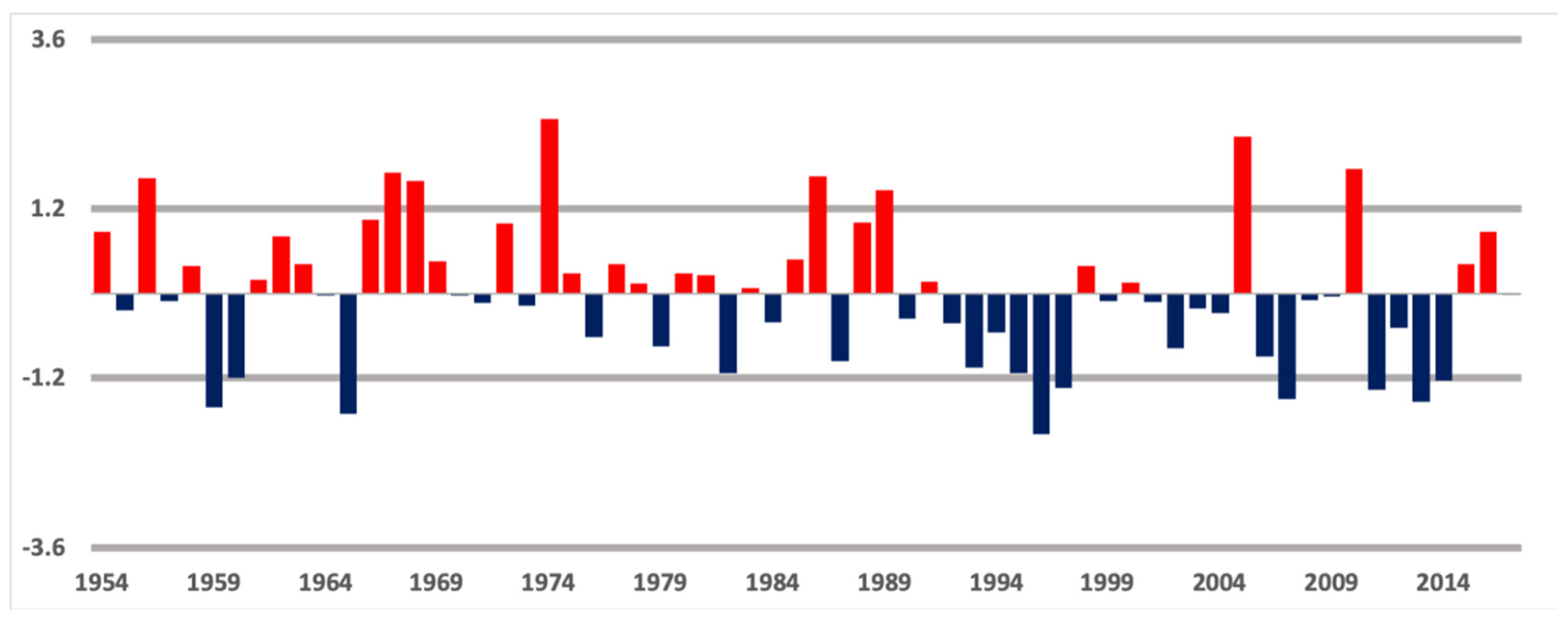
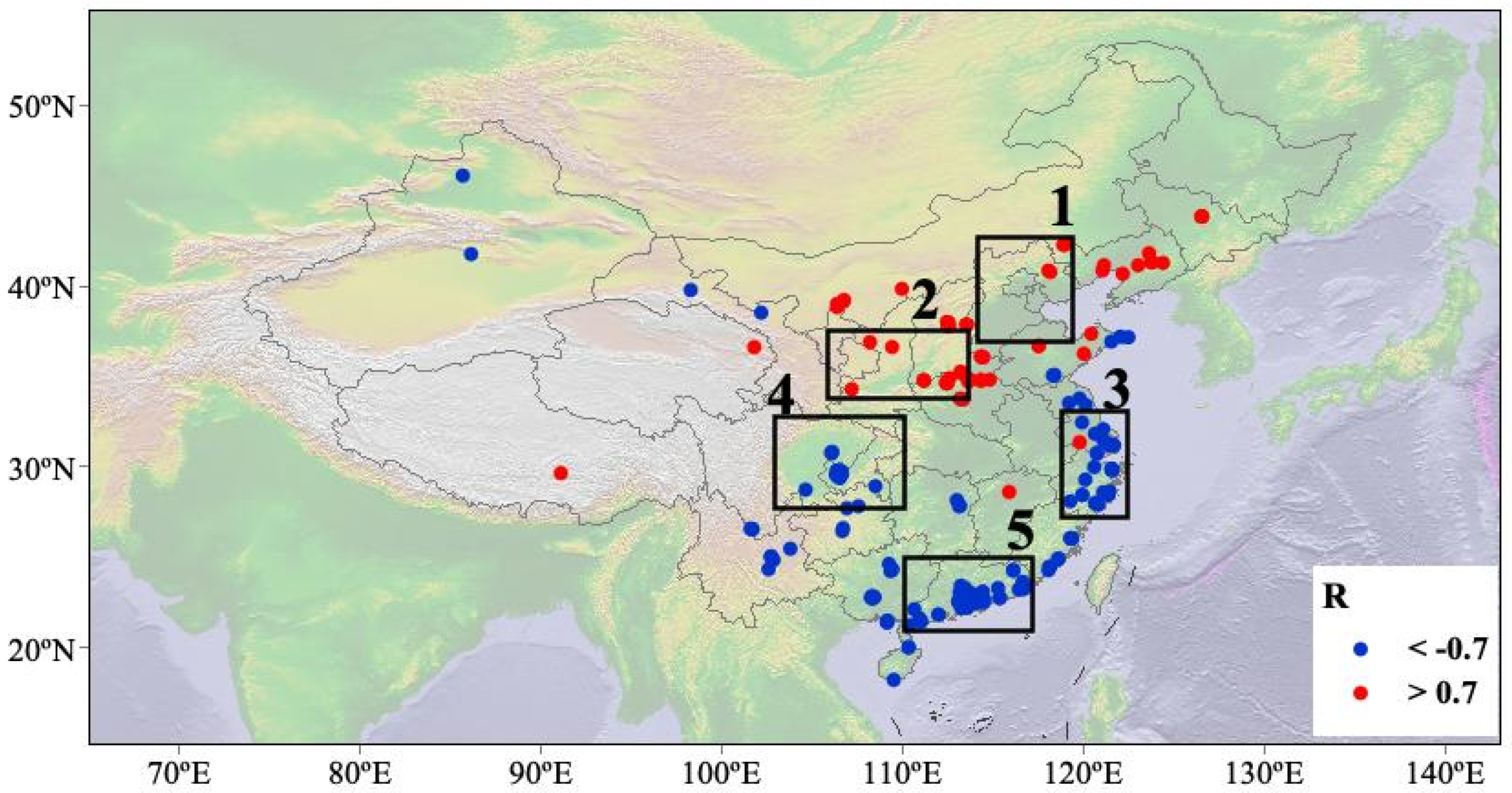
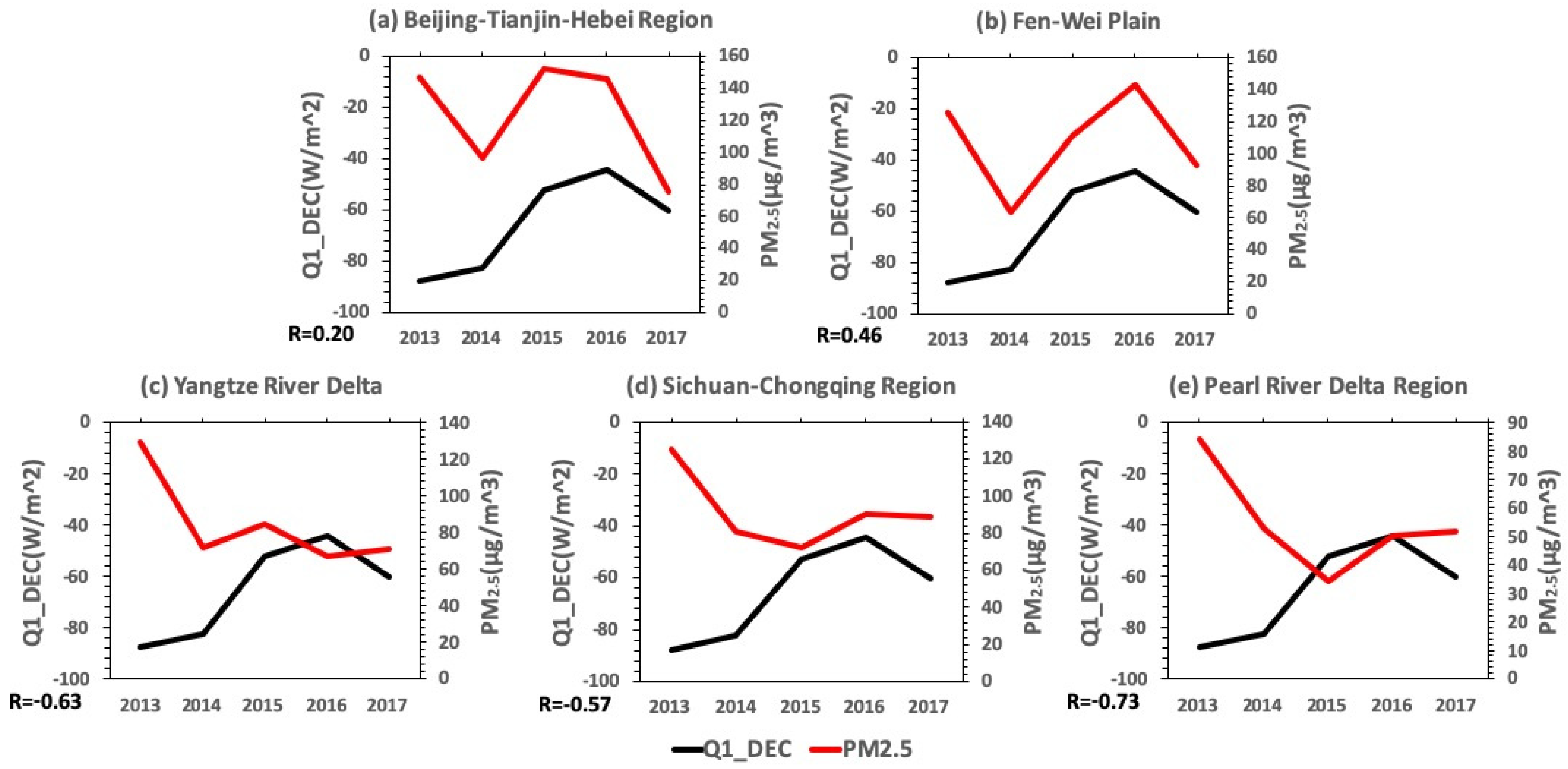
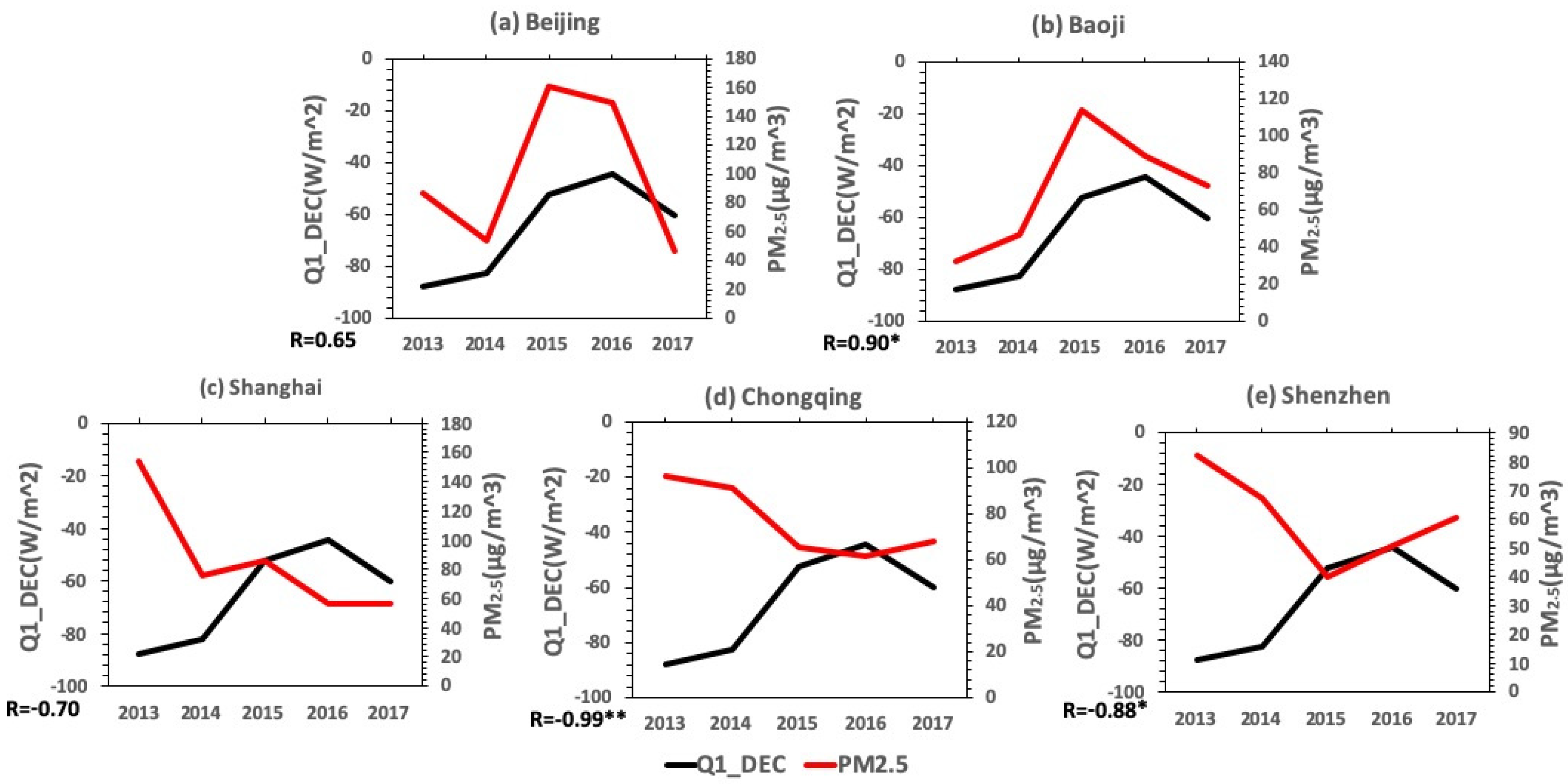
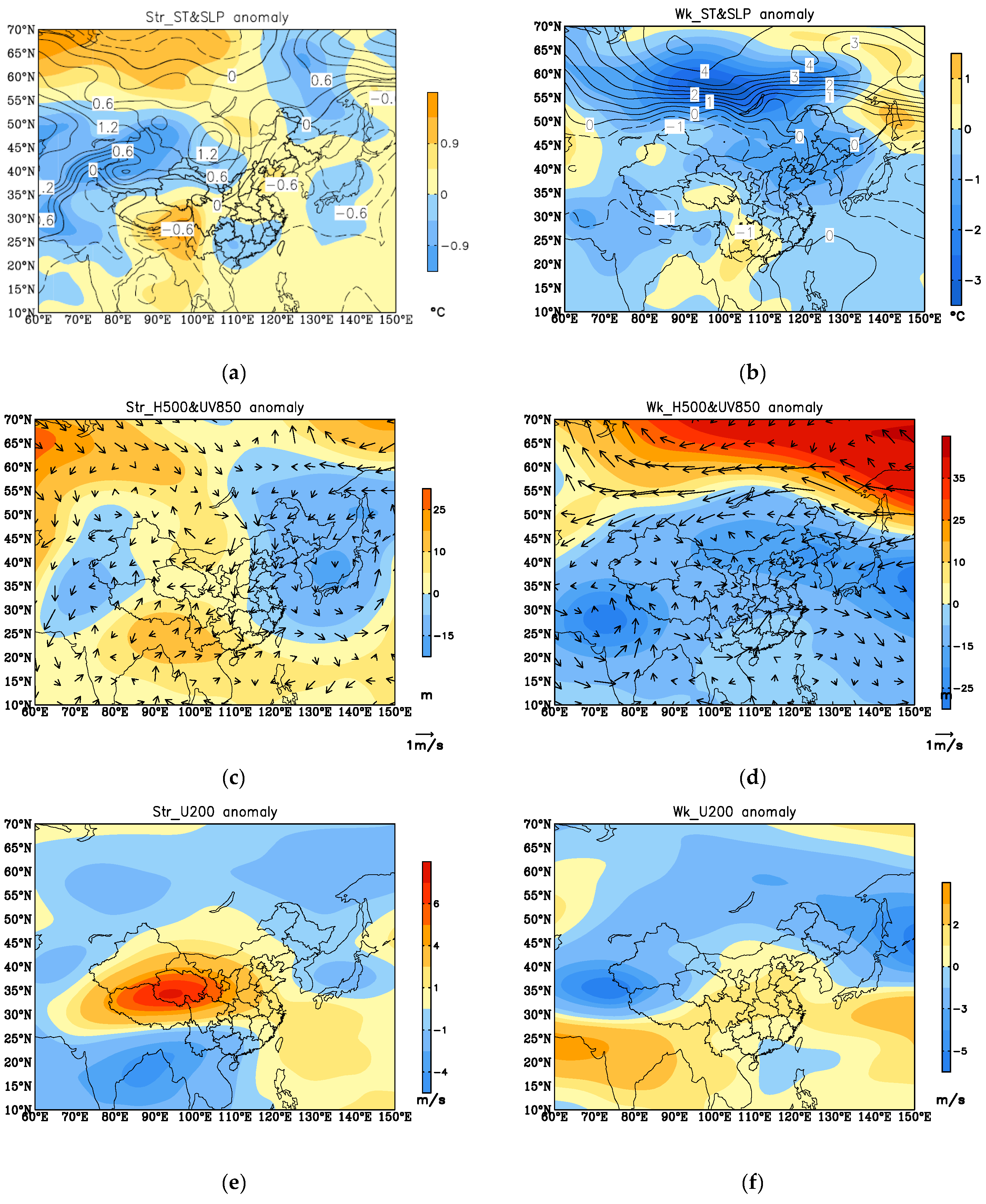
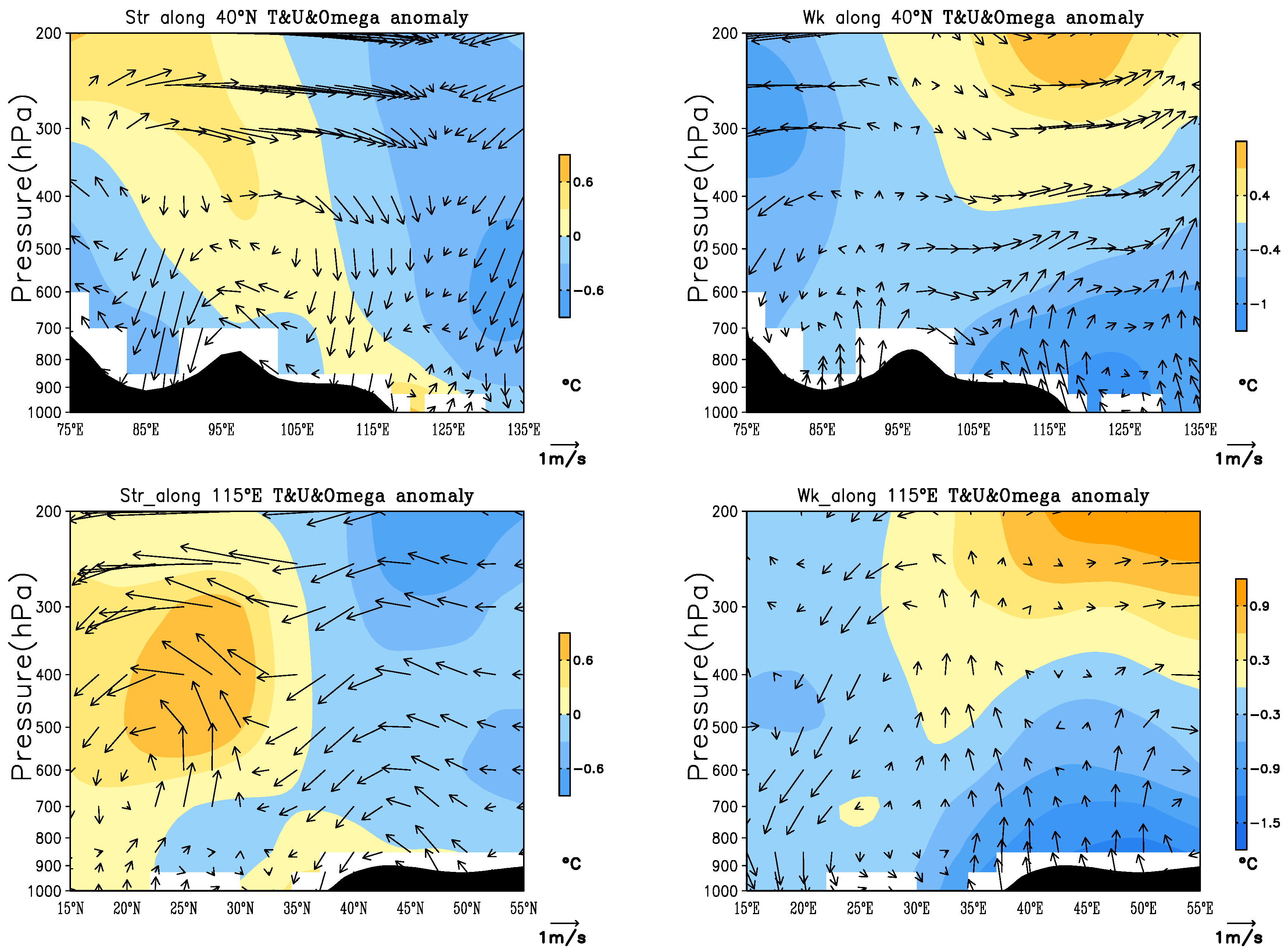
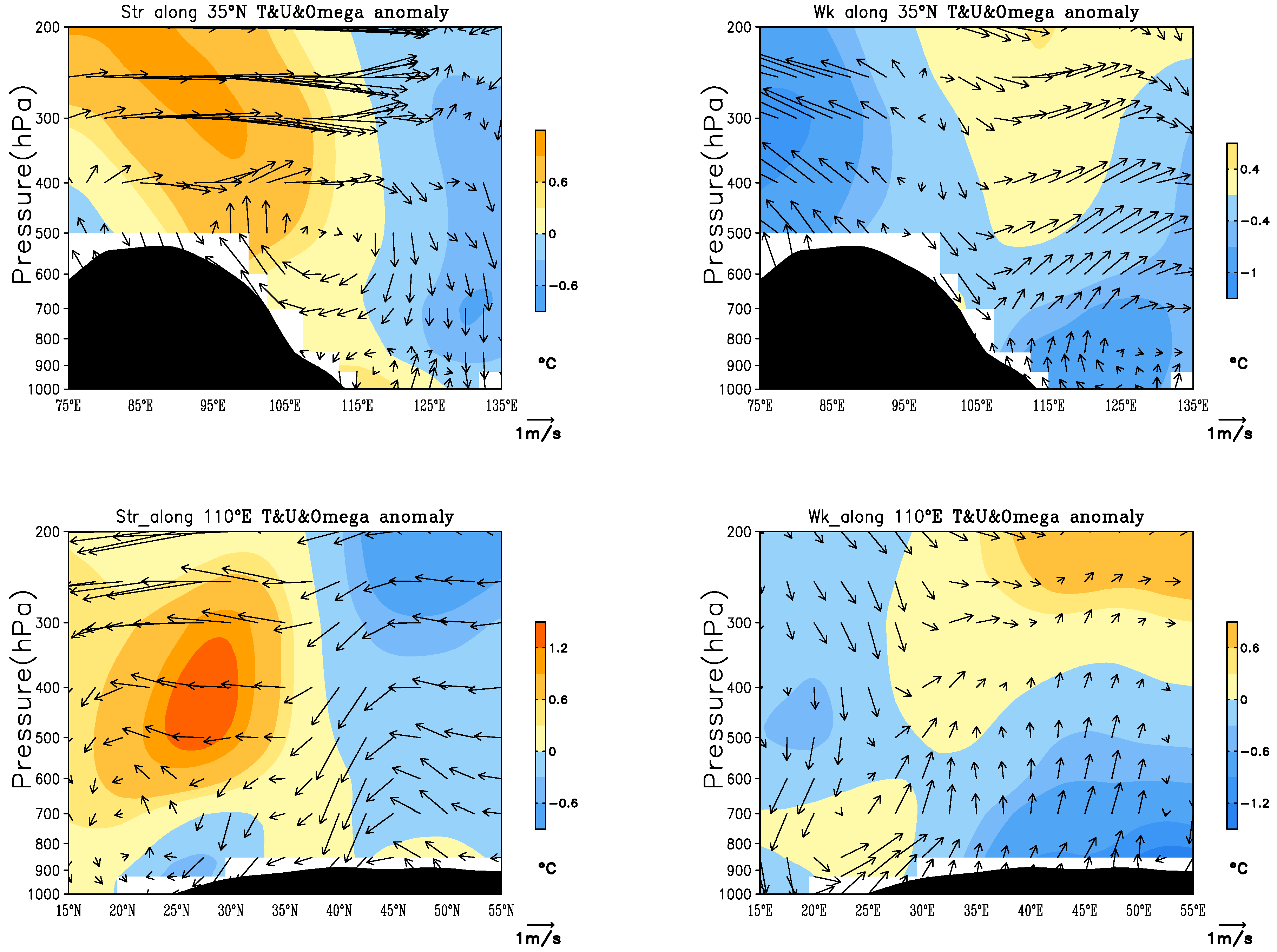
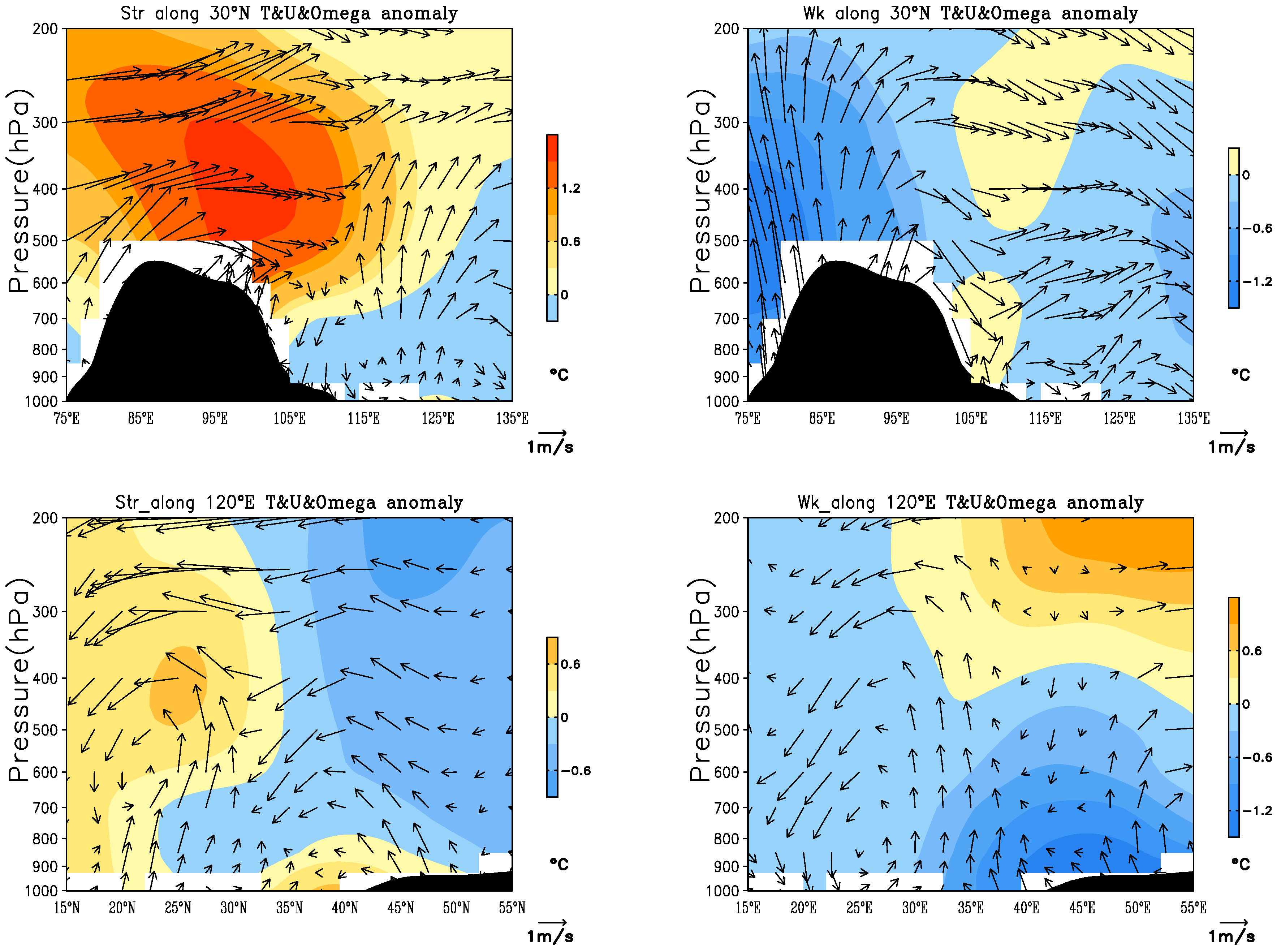

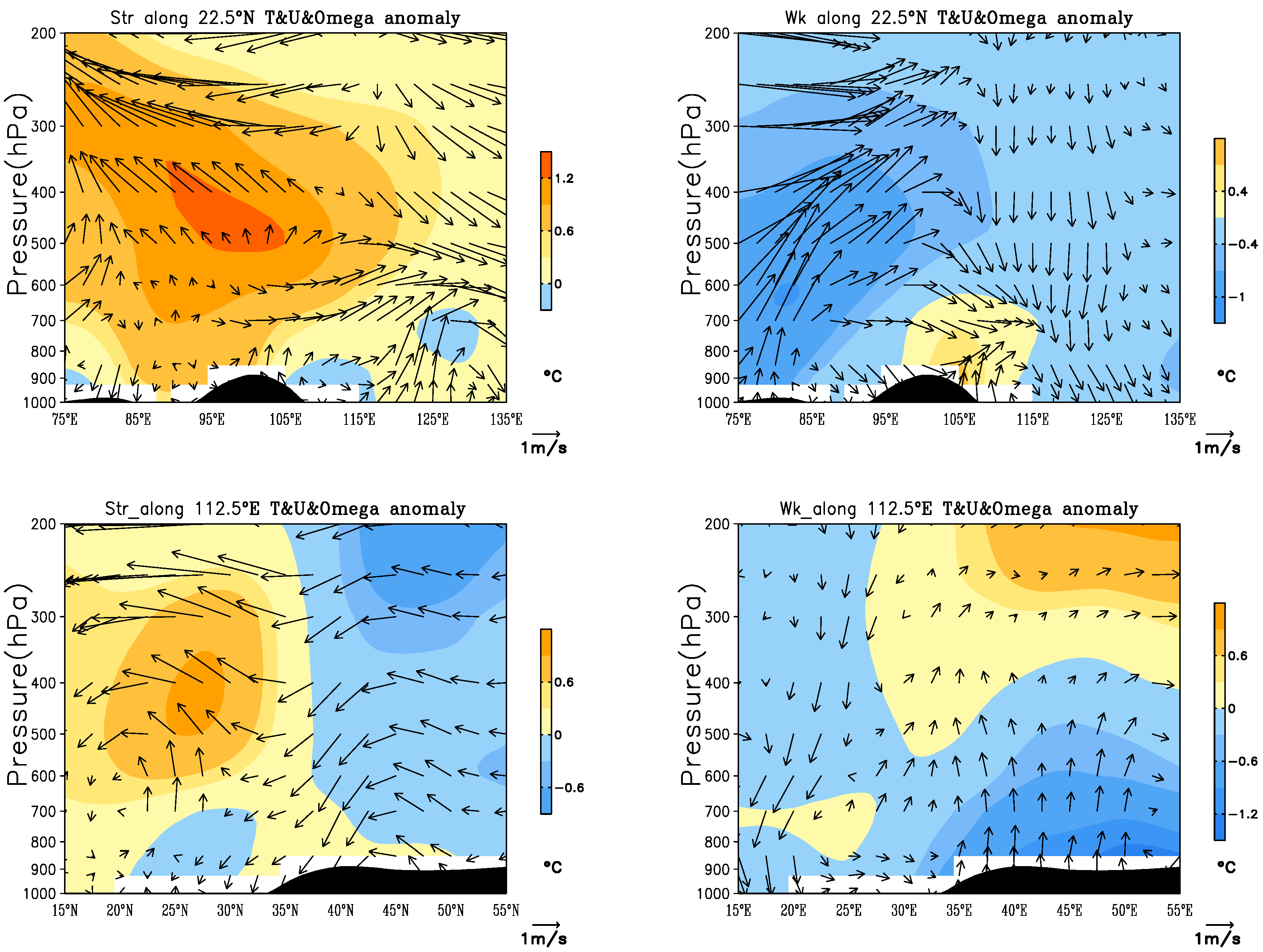
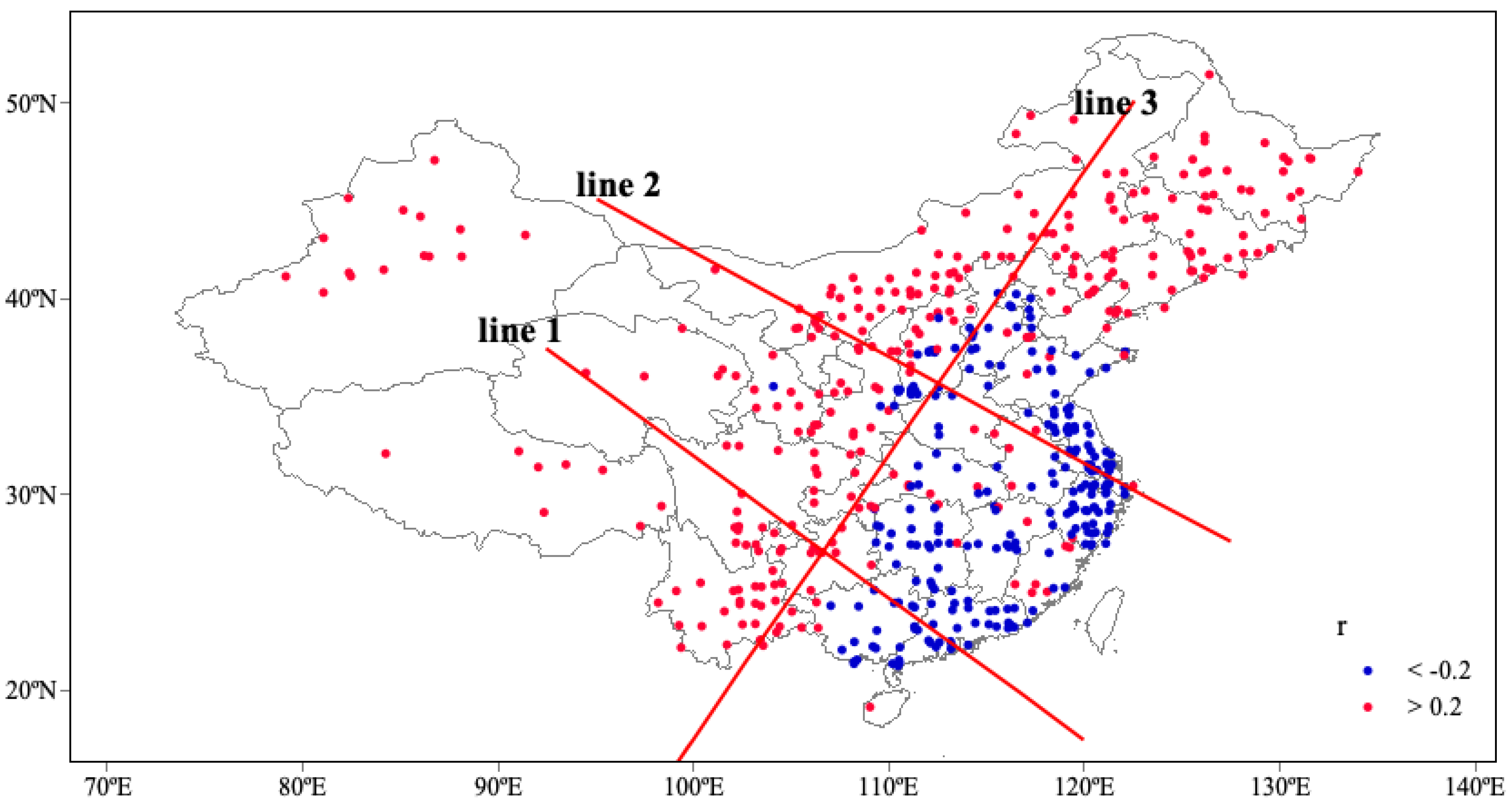
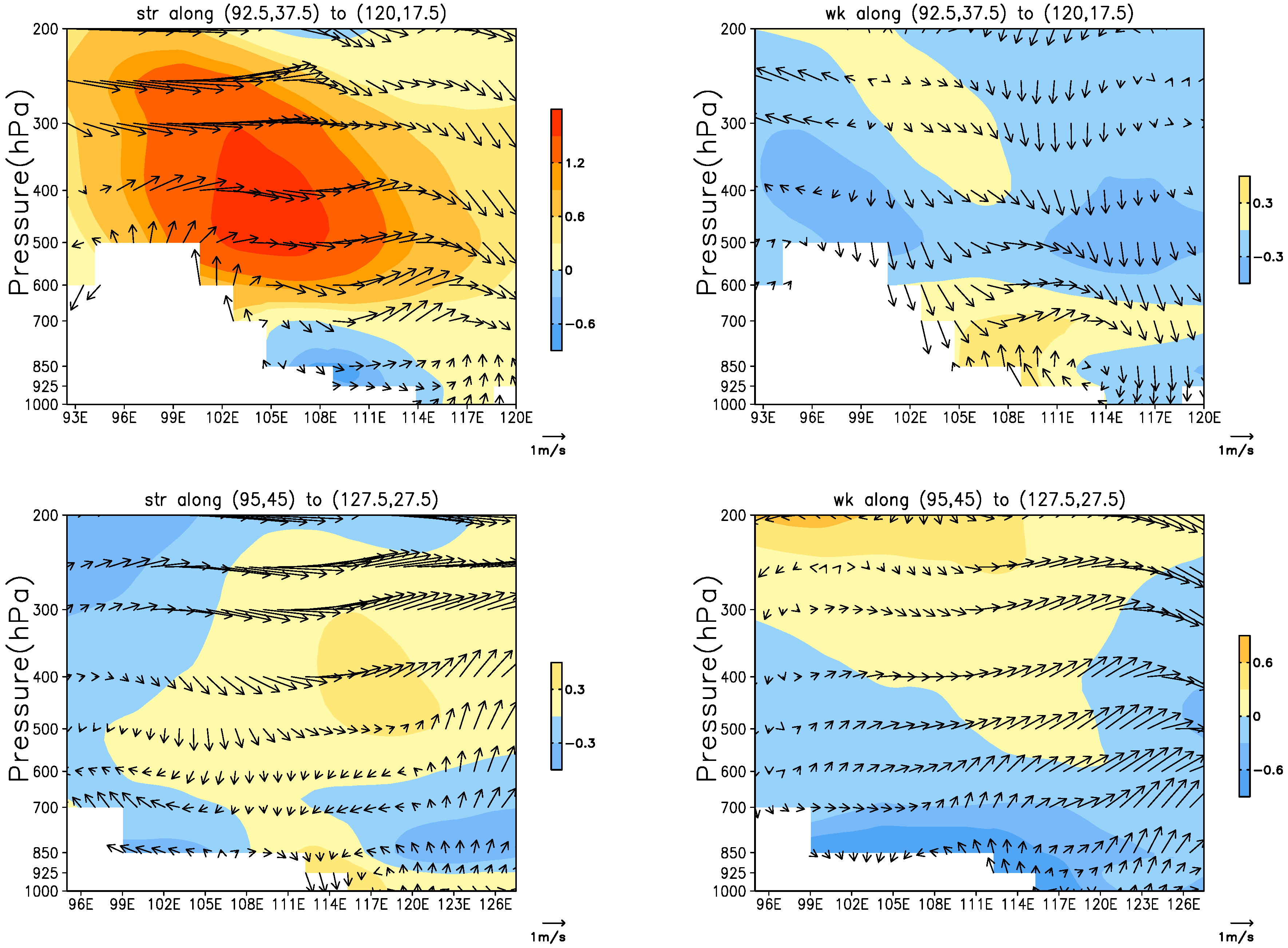
© 2019 by the authors. Licensee MDPI, Basel, Switzerland. This article is an open access article distributed under the terms and conditions of the Creative Commons Attribution (CC BY) license (http://creativecommons.org/licenses/by/4.0/).
Share and Cite
Li, Y.; An, X.; Fan, G.; Wang, C.; Zhao, Y.; Li, J. Influence of Thermal Effects on Qinghai-Tibet Plateau on Air Quality in Typical Regions of China in Winter. Atmosphere 2020, 11, 50. https://doi.org/10.3390/atmos11010050
Li Y, An X, Fan G, Wang C, Zhao Y, Li J. Influence of Thermal Effects on Qinghai-Tibet Plateau on Air Quality in Typical Regions of China in Winter. Atmosphere. 2020; 11(1):50. https://doi.org/10.3390/atmos11010050
Chicago/Turabian StyleLi, Yanjun, Xingqin An, Guangzhou Fan, Chao Wang, Yang Zhao, and Jiangtao Li. 2020. "Influence of Thermal Effects on Qinghai-Tibet Plateau on Air Quality in Typical Regions of China in Winter" Atmosphere 11, no. 1: 50. https://doi.org/10.3390/atmos11010050
APA StyleLi, Y., An, X., Fan, G., Wang, C., Zhao, Y., & Li, J. (2020). Influence of Thermal Effects on Qinghai-Tibet Plateau on Air Quality in Typical Regions of China in Winter. Atmosphere, 11(1), 50. https://doi.org/10.3390/atmos11010050





